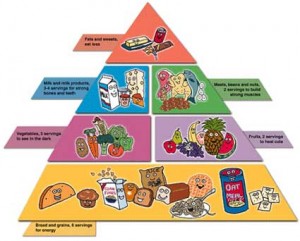You’ve heard the news reports. Child obesity is on the rise. Children are developing diabetes that was once primarily seen in adults. Then on the opposite end, you may have read reports emphasizing that young children need fats for their development. There is little mention of eating whole foods. So how do you beat childhood obesity and diabetes,  but still provide for your child’s developmental needs?
but still provide for your child’s developmental needs?
First Introduction to Food
At around six months of age you may begin introducing solid food to your child. Here we go …You may either choose to purchase your baby food or process your own. If you purchase the ready-made” baby food, ensure that the ingredients are natural. What is the trick to knowing this? If you don’t know what the ingredients are, don’t buy it!
This is where healthy eating habits begin. Start with one type of food source at a time to ensure your child doesn’t have any food allergies. You may choose avocados, bananas, sweet potatoes, and pears to start. As your child is still drinking milk, most of the protein and fats will be received in that form. A few months later you then may begin introducing protein from meat or vegetarian sources. So far, it’s pretty simple, right?
As Your Child Grows
Deciding on a healthy diet for your toddler is most likely going to be based on your eating habits. They mimic what they see, so be careful. Whether you are a vegetarian or a meat eater, it doesn’t matter; your child will eventually pick his or her own path. What matters now is providing your child adequate fat and protein for brain and overall development, as well as whole foods to prevent diseases. Avoid those sugary fruit snacks and opt for healthy choices:
- Fat and Protein – Red meat, eggs, fish, milk, or vegetarian choices. Remember your child needs good fats when making your choice of protein.
- Vegetables – Tomatoes, spinach, peas, and carrots are the top choices
- Fruits – Choose only those in season to ensure freshness
- Unprocessed foods – Whole grains and whole wheat
Continuing the Path to Health
Once establishing healthy eating for your child, he or she will most likely continue on this path. Yes, other children or adults will introduce your child to candy and the greasy fast foods like hamburger, but having a good foundation is what builds a healthy child. Your child will eventually make his or her own decision on what type of food to eat – but a healthy foundation is never forgotten. And the biggest trick to healthy eating for children – NEVER deny them something they want to try. Let them try the food they desire, but explain to them what they are eating. Try it. It may shock you when your child reaches for the apple on the counter, and not the candy brought home from some birthday party…!








